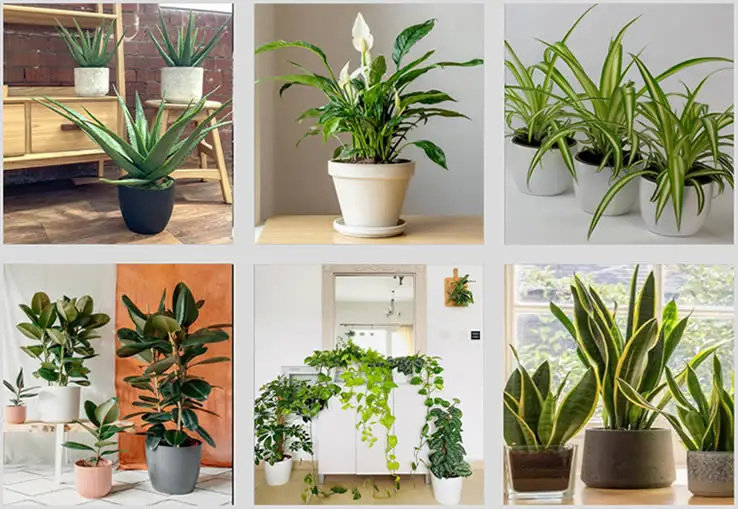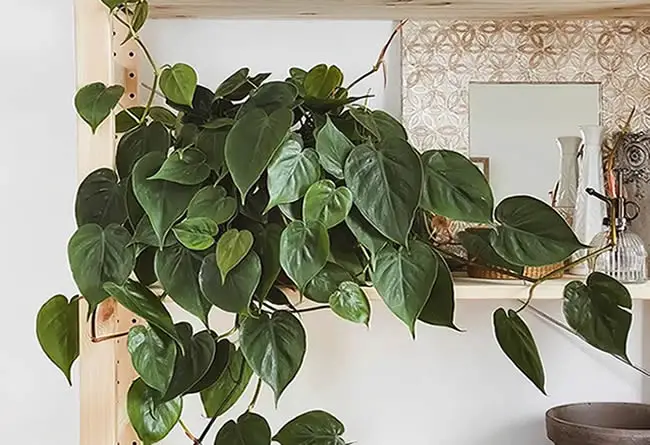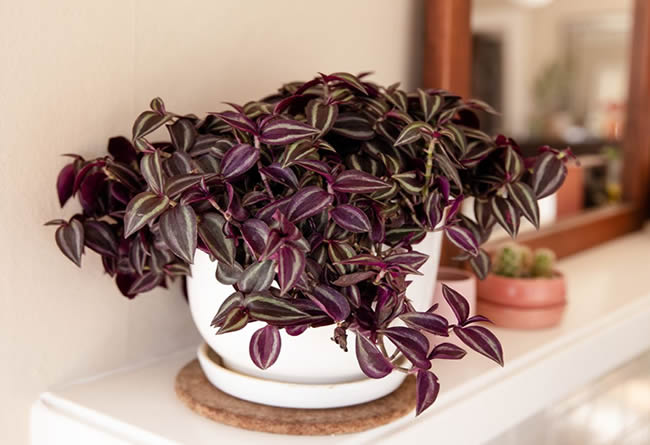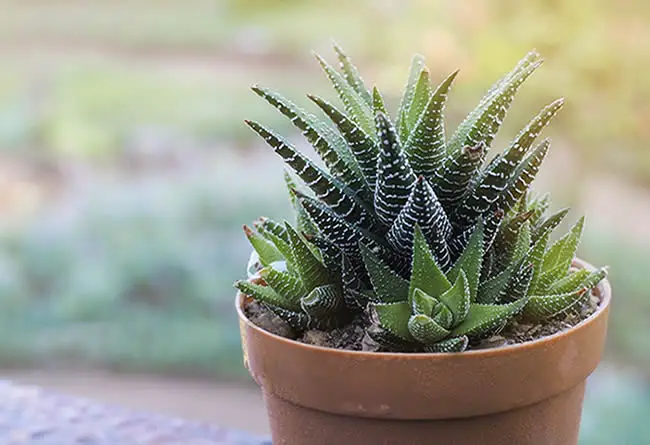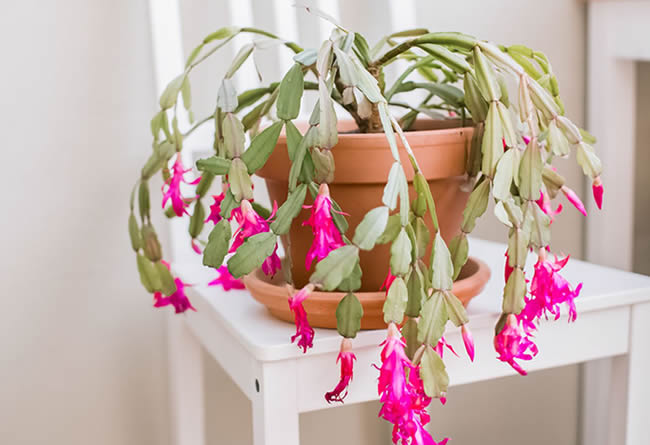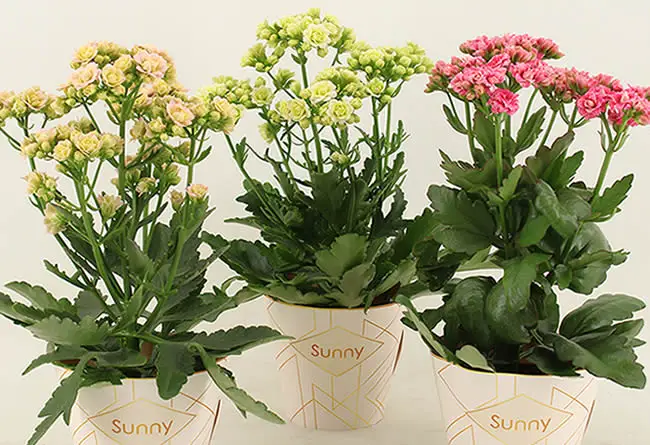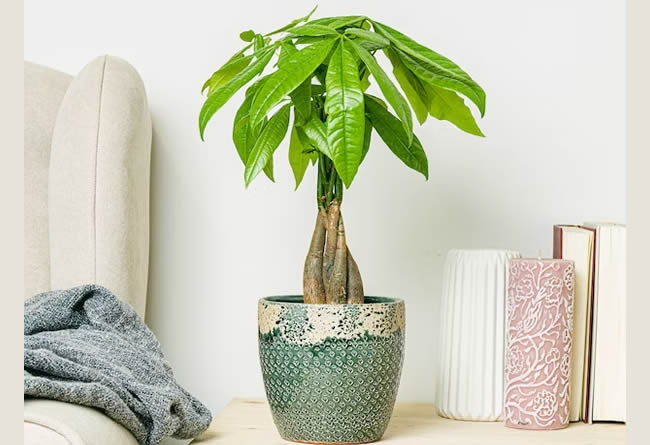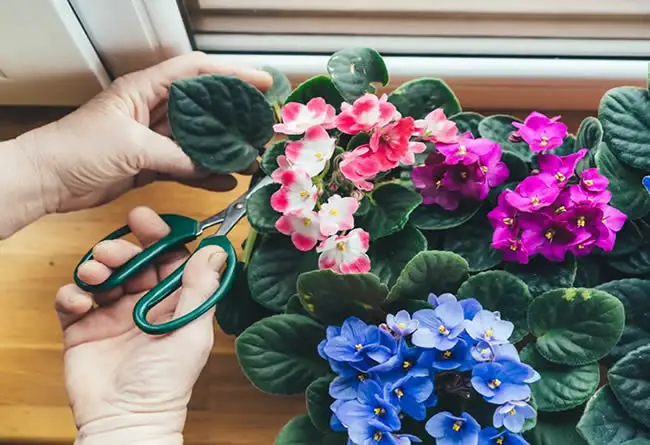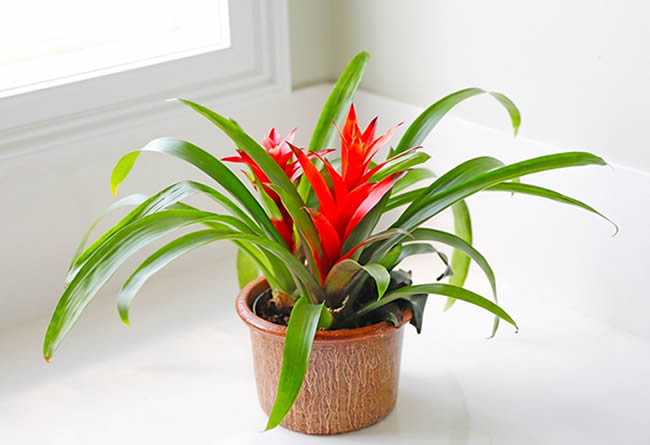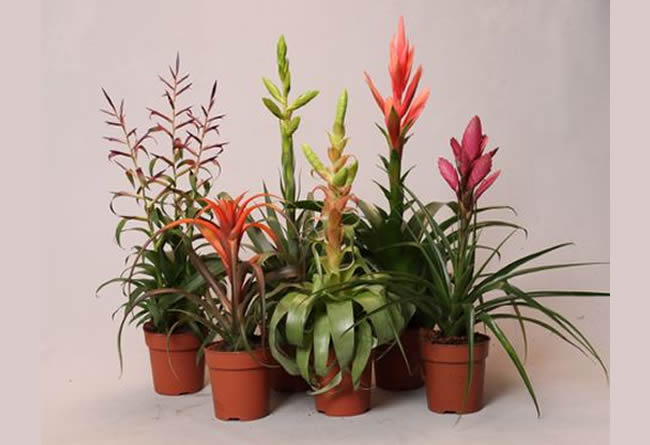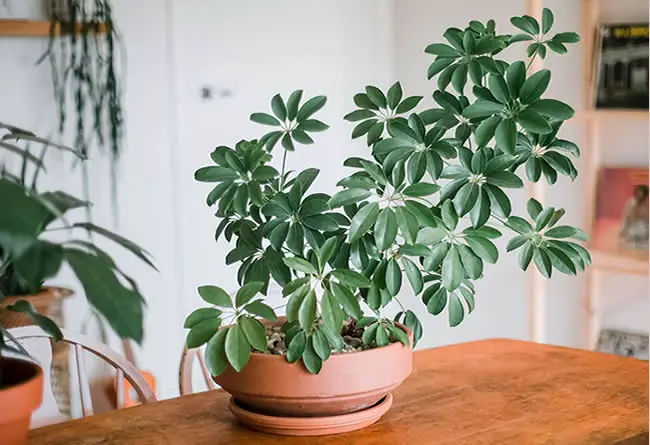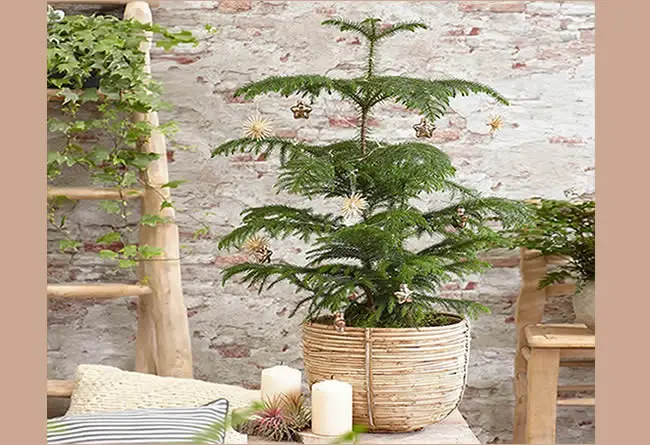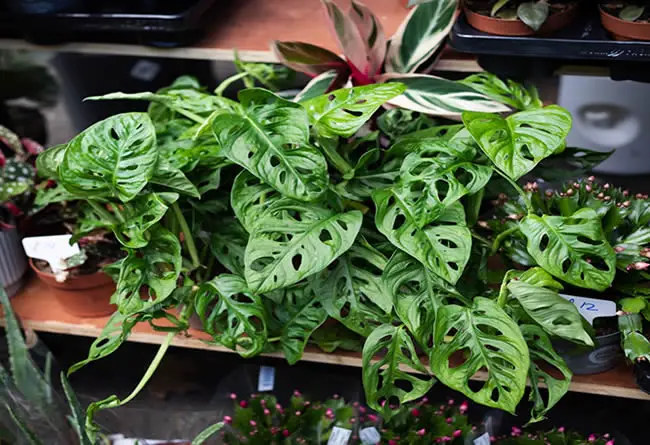In the realm of indoor gardening, not all green thumbs are created equal, and for many of us, the struggle to keep our houseplants thriving in an age where time is at a premium is a universal problem. The good news? There exists a diverse array of resilient and hard-to-kill houseplants that can withstand even the most forgetful or novice caretaker.
Table of Contents
- Thriving Greenery: A Guide to 30 Hardy Houseplants That Defy Neglect
- 30 Hard To Kill Houseplants & What Makes Them Special
- 1. Snake Plant (Sansevieria)
- 2. ZZ Plant (Zamioculcas zamiifolia)
- 3. Spider Plant (Chlorophytum comosum)
- 4. Pothos (Epipremnum aureum)
- 5. Peace Lily (Spathiphyllum)
- 6. Aloe Vera (Aloe barbadensis miller)
- 7. Rubber Plant (Ficus elastica)
- 8. Jade Plant (Crassula ovata)
- 9. Cast Iron Plant (Aspidistra elatior)
- 10. Chinese Evergreen (Aglaonema)
- 11. Philodendron
- 12. Golden Pothos (Epipremnum aureum ‘Marble Queen’)
- 13. Parlor Palm (Chamaedorea elegans)
- 14. Ponytail Palm (Beaucarnea recurvata)
- 15. Dracaena (Dracaena marginata, Dracaena fragrans, etc.)
- 16. Boston Fern (Nephrolepis exaltata)
- 17. Dieffenbachia (Dumb Cane)
- 18. Croton (Codiaeum variegatum)
- 19. Heartleaf Philodendron (Philodendron hederaceum)
- 20. Spiderwort (Tradescantia zebrina)
- 21. Haworthia
- 22. Christmas Cactus (Schlumbergera)
- 23. Kalanchoe
- 24. Money Tree (Pachira aquatica)
- 25. African Violet (Saintpaulia)
- 26. Bromeliad
- 27. Air Plant (Tillandsia)
- 28. Umbrella Plant/Tree (Schefflera)
- 29. Norfolk Island Pine (Araucaria heterophylla)
- 30. Swiss Cheese Plant (Monstera deliciosa)
Thriving Greenery: A Guide to 30 Hardy Houseplants That Defy Neglect
Whether you’re a seasoned plant enthusiast or a reluctant greenery adopter, this guide is your ticket to a thriving indoor jungle with minimal effort.
In this comprehensive article, we’ll explore the lush world of houseplants that seem to defy the odds, weathering neglect, inconsistent care, and the occasional forgetful watering.
From the iconic Snake Plant to the graceful Peace Lily, we’ve curated a list of 30 hardy plants that not only survive but flourish with a little less attention than their more high-maintenance counterparts.
Join us on a journey through the resilient foliage that can transform your living space into a lush oasis without demanding constant attention.
Discover the secrets behind their robust nature, optimal care conditions, and the myriad benefits they bring to your home.
Whether you’re a busy professional, a forgetful waterer, or simply new to the world of indoor gardening, these hard-to-kill houseplants are your green companions on the path to a thriving, low-maintenance indoor garden.
Common traits of hard to kill house plants
Hard-to-kill houseplants typically share several common traits that contribute to their resilience and adaptability.
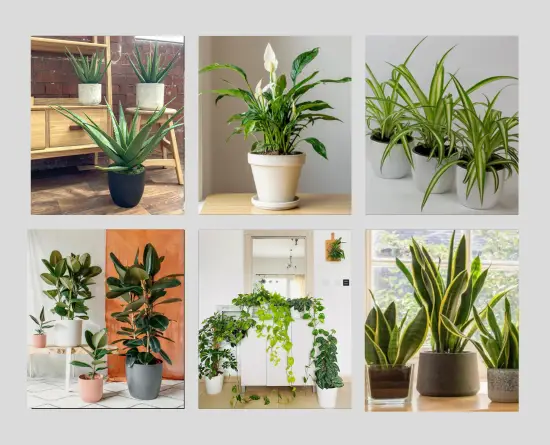
While individual plants may have specific care requirements, the following characteristics are often found in plants that are forgiving and can withstand less-than-ideal conditions:
- Tolerance to Low Light: Hardy plants can thrive in a variety of lighting conditions, including low light. They are adaptable to less sunlight and can still grow and remain healthy.
- Moderate Watering Needs: These plants are forgiving when it comes to watering. They can withstand occasional neglect and won’t suffer from overwatering as much as more sensitive plants might.
- Drought Tolerance: Many hard-to-kill plants have adapted to survive in arid conditions, meaning they can endure periods of dry soil without wilting or suffering permanent damage.
- Adaptability to Different Humidity Levels: Resilient plants can often tolerate a range of humidity levels. They are not overly sensitive to changes in moisture in the air.
- Pest Resistance: While no plant is entirely immune to pests, hardy houseplants are generally more resistant to common indoor pests. This trait reduces the likelihood of infestations and the need for frequent pesticide applications.
- Ease of Propagation: These plants are often easy to propagate, allowing you to create new plants from cuttings without requiring advanced horticultural skills.
- Forgiving of Soil Types: Hardy plants can grow in a variety of soil types. They are not overly finicky about the specific composition of the soil in which they are planted.
- Low Maintenance: They require minimal grooming, pruning, or other forms of maintenance. Their growth habits are often well-suited to indoor environments.
- Longevity: Many hard-to-kill houseplants have a longer lifespan, making them enduring fixtures in your indoor space.
- Versatile in Pot Sizes: These plants are often forgiving if you don’t get the pot size exactly right. They can adapt to a range of pot sizes without becoming root-bound or stressed.
While these traits are common among hard-to-kill houseplants, it’s essential to note that each plant is unique. Understanding the specific care needs of individual species is still crucial for ensuring their well-being and longevity in your home.
The 30 hard to kill houseplants at a glance
- Snake Plant (Sansevieria)
- ZZ Plant (Zamioculcas zamiifolia)
- Spider Plant (Chlorophytum comosum)
- Pothos (Epipremnum aureum)
- Peace Lily (Spathiphyllum)
- Aloe Vera (Aloe barbadensis miller)
- Rubber Plant (Ficus elastica)
- Jade Plant (Crassula ovata)
- Cast Iron Plant (Aspidistra elatior)
- Chinese Evergreen (Aglaonema)
- Philodendron
- Golden Pothos (Epipremnum aureum ‘Marble Queen’)
- Parlor Palm (Chamaedorea elegans)
- Ponytail Palm (Beaucarnea recurvata)
- Dracaena (Dracaena marginata, Dracaena fragrans, etc.)
- Boston Fern (Nephrolepis exaltata)
- Dieffenbachia (Dumb Cane)
- Croton (Codiaeum variegatum)
- Heartleaf Philodendron (Philodendron hederaceum)
- Spiderwort (Tradescantia zebrina)
- Haworthia
- Christmas Cactus (Schlumbergera)
- Kalanchoe
- Money Tree (Pachira aquatica)
- African Violet (Saintpaulia)
- Bromeliad
- Air Plant (Tillandsia)
- Schefflera (Umbrella Tree)
- Norfolk Island Pine (Araucaria heterophylla)
- Swiss Cheese Plant (Monstera deliciosa)
30 Hard To Kill Houseplants & What Makes Them Special
Below are the 30 best easy care house plants that will continue to grow even with minimal effort from you.
1. Snake Plant (Sansevieria)
The Snake Plant, is a member of the dracaena family (see our dracaena guide). It is also known as Mother-in-Law’s Tongue, tops the list of hard-to-kill houseplants due to its exceptional adaptability.
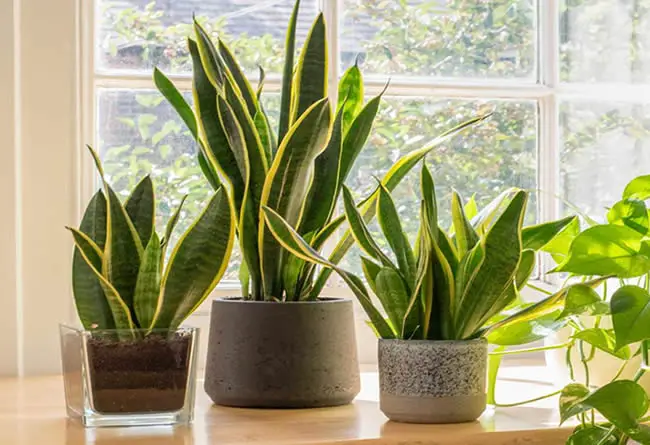
Renowned for thriving in low light conditions, it can endure periods of neglect and irregular watering.
Its thick, upright leaves store water efficiently, making it remarkably drought-tolerant.
Additionally, Snake Plants convert carbon dioxide into oxygen at night, contributing to improved air quality.
2. ZZ Plant (Zamioculcas zamiifolia)
The ZZ Plant is a resilient gem that excels in low-light environments, making it an ideal choice for busy individuals or those with less-than-ideal lighting conditions.
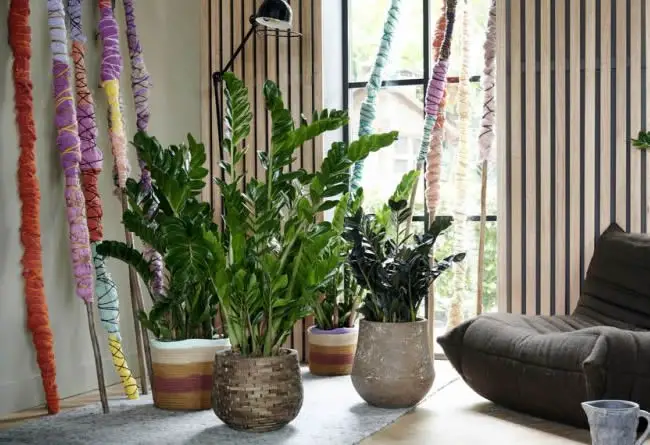
Its glossy, dark green leaves store water, allowing it to withstand infrequent watering and drought-like conditions.
This plant is virtually indestructible, capable of bouncing back from extended periods of neglect.
Its upright growth habit and air-purifying qualities further enhance its appeal as an easy-to-care-for and hard-to-kill houseplant, adding a touch of greenery to any indoor space.
See out ZZ plant care guide.
3. Spider Plant (Chlorophytum comosum)
The Spider Plant earns its hard-to-kill reputation through its adaptability and resilience.
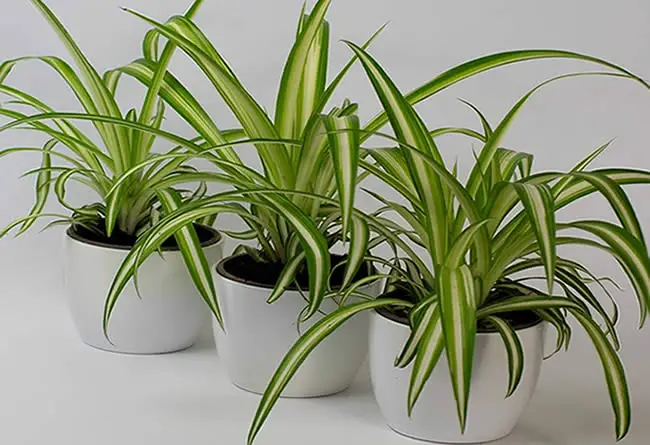
Thriving in various light conditions, it can tolerate both bright, indirect sunlight and lower light levels.
Spider Plants are forgiving when it comes to watering, with a preference for evenly moist soil but an ability to withstand occasional drying out.
Their arching leaves give rise to “pups,” allowing easy propagation for new plants.
This air-purifying champion is known to remove common household pollutants, contributing to a healthier indoor environment.
See our spider plant care guide.
4. Pothos (Epipremnum aureum)
Pothos, often referred to as Devil’s Ivy, is a go-to choice for novice plant enthusiasts.
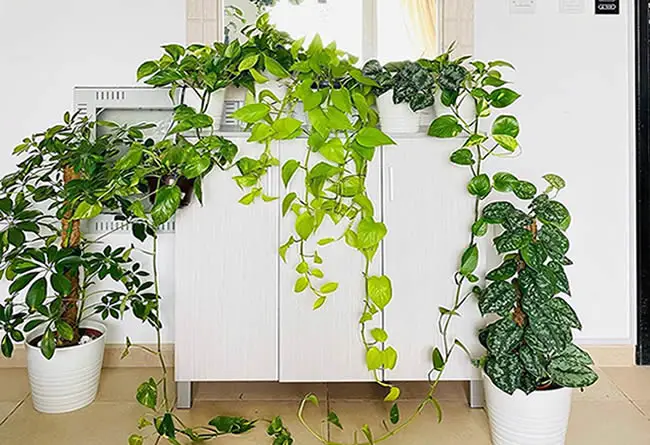
This trailing vine is incredibly adaptable, thriving in low to bright indirect light.
Pothos can endure erratic watering schedules, as its thick, waxy leaves store water.
Known for its air-purifying qualities, it helps remove toxins from the air.
Pothos is versatile in terms of potting and can thrive in different soil types, making it an excellent addition to any home seeking low-maintenance greenery.
Pothos are a great plant for house décor (see our pothos care guide).
5. Peace Lily (Spathiphyllum)
The Peace Lily stands as a symbol of tranquility and is equally known for its robust nature.
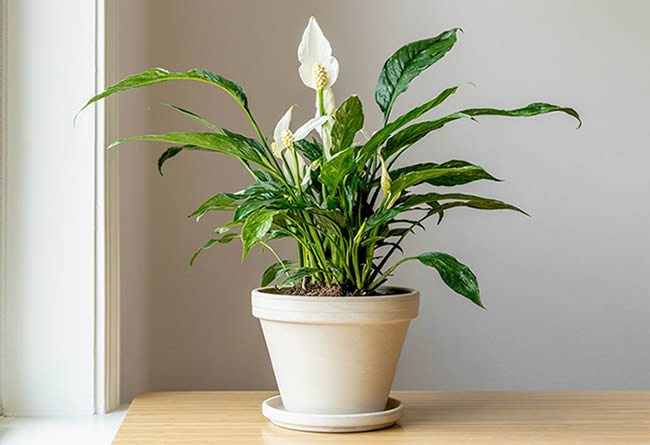
Flourishing in low to moderate light, this plant is forgiving of less-than-ideal conditions.
One of its standout features is its ability to indicate when it needs water – its leaves droop, signaling the perfect time for a drink.
Peace Lilies can bounce back gracefully from dehydration, making them suitable for forgetful caretakers.
With elegant white blooms and air-purifying capabilities, they bring both beauty and health benefits to indoor spaces.
6. Aloe Vera (Aloe barbadensis miller)
Aloe Vera, celebrated for its medicinal properties, is also a hard-to-kill succulent and very easy to care for (see our aloe care guide).
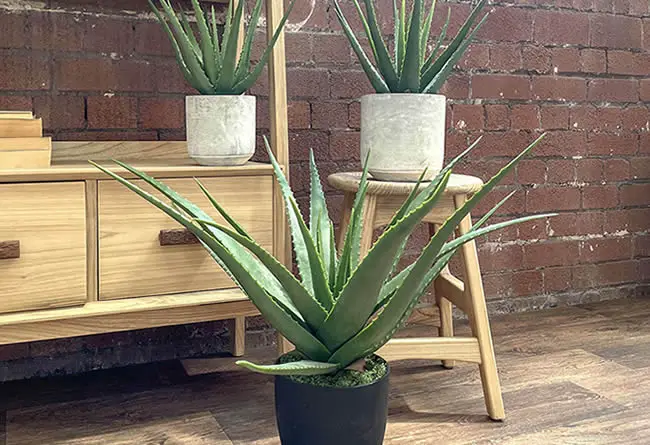
Thriving in bright, indirect sunlight, Aloe is well-suited for a sunny windowsill.
What makes Aloe Vera particularly resilient is its water-storing leaves, allowing it to withstand infrequent watering.
This succulent’s low-maintenance nature extends to its soil preferences, making it adaptable to various well-draining mixtures.
Beyond its aesthetic appeal, Aloe Vera provides a soothing gel for skin ailments, adding a practical dimension to its role as a virtually indestructible houseplant.
All aloe plants are hard to kill so don’t restrict yourself to just aloe vera.
7. Rubber Plant (Ficus elastica)
The Rubber Plant earns its hardy reputation with an ability to endure a variety of light conditions, from bright indirect light to partial shade.
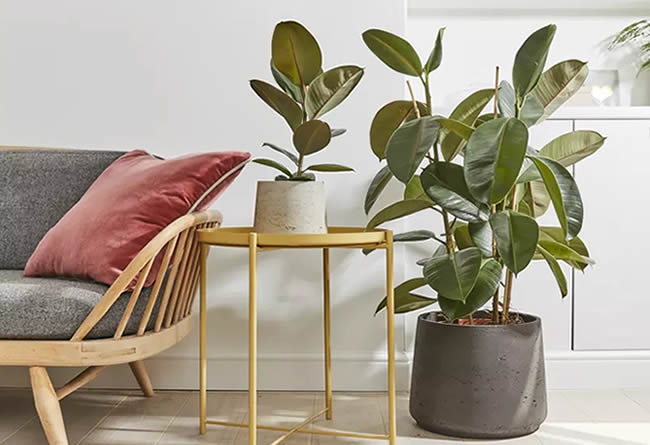
Its broad, glossy leaves contribute to its adaptability, efficiently converting light into energy.
With a preference for consistent watering but capable of surviving occasional droughts, this plant offers flexibility in care. Just don’t use coffee grounds on a rubber plant!
The Rubber Plant’s air-purifying qualities make it a resilient and health-conscious choice for indoor spaces, improving air quality by removing common pollutants.
8. Jade Plant (Crassula ovata)
The Jade Plant, known as the “money plant” or “lucky plant,” is a succulent marvel appreciated for its hardiness.
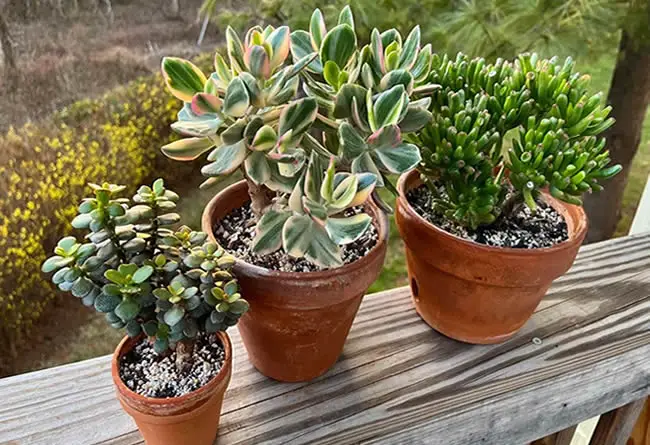
Thriving in bright, indirect light, it can endure lower light levels, making it suitable for various indoor environments.
Water-wise, the Jade Plant prefers to dry out between watering, making it forgiving of occasional lapses in attention.
Its compact, tree-like appearance adds an aesthetic touch, while its resilience and ease of propagation make it an excellent choice for those new to the world of indoor gardening.
9. Cast Iron Plant (Aspidistra elatior)
True to its name, the Cast Iron Plant is a rugged and enduring choice for indoor greenery.
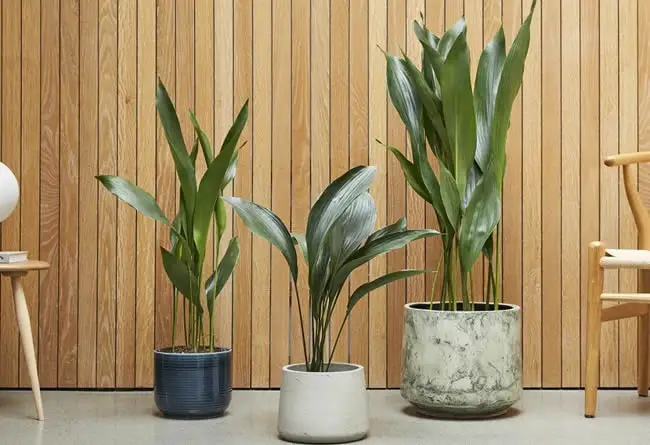
Adaptable to low light conditions, it can thrive in dim corners where other plants struggle.
Known for its resilience to neglect and a penchant for infrequent watering, the Cast Iron Plant is a reliable companion for those with busy lifestyles.
With its handsome, dark green leaves and air-purifying qualities, this hard-to-kill plant is a steadfast addition to any indoor space, requiring minimal attention for maximum impact.
10. Chinese Evergreen (Aglaonema)
Chinese Evergreen, with its striking foliage, secures its place as an easy-to-care-for houseplant.
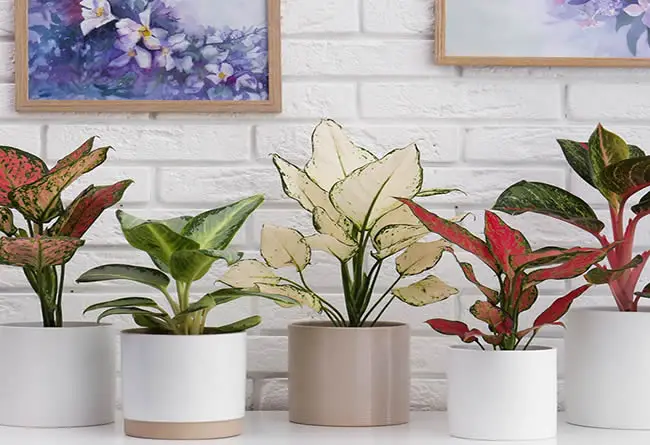
Thriving in low to moderate light, it adapts well to indoor environments with less sunlight.
The plant’s ability to tolerate inconsistent watering and varying humidity levels makes it an ideal choice for those looking to add greenery to their spaces without constant attention.
Chinese Evergreen’s attractive leaves, featuring various patterns and colors, elevate its ornamental appeal, providing both resilience and aesthetics to indoor gardens.
11. Philodendron
Philodendrons, encompassing various species, share a common trait of being robust and adaptable.
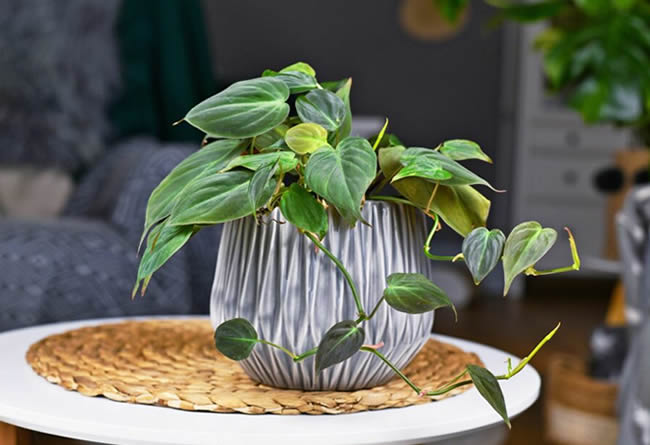
From the heart-shaped leaves of the Heartleaf Philodendron to the split leaves of the Monstera, these plants thrive in low to moderate light conditions.
Known for their forgiving nature when it comes to watering, Philodendrons can withstand occasional dry spells.
Their trailing or climbing growth habits make them versatile for different indoor settings, while their air-purifying qualities contribute to a healthier living environment.
12. Golden Pothos (Epipremnum aureum ‘Marble Queen’)
Golden Pothos, also known as Devil’s Ivy, is celebrated for its resilience and low-maintenance care.
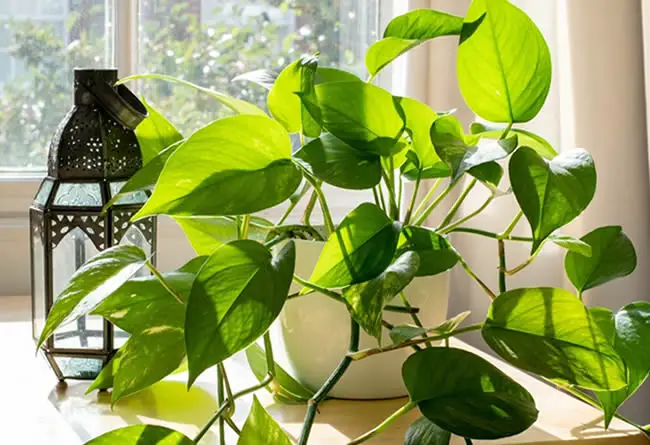
Flourishing in a range of lighting conditions, from low light to bright, indirect light, this trailing vine adds a touch of green to various indoor spaces.
With its variegated leaves, the ‘Marble Queen’ variety enhances aesthetic appeal.
Golden Pothos is forgiving when it comes to watering, tolerating occasional dryness.
Its ease of propagation and air-purifying capabilities make it a popular choice for those seeking a hard-to-kill yet visually appealing houseplant. Check out our extensive pothos growing guide.
13. Parlor Palm (Chamaedorea elegans)
The Parlor Palm earns its reputation as a hard-to-kill houseplant with its adaptability to low light conditions and resilience to inconsistent watering.
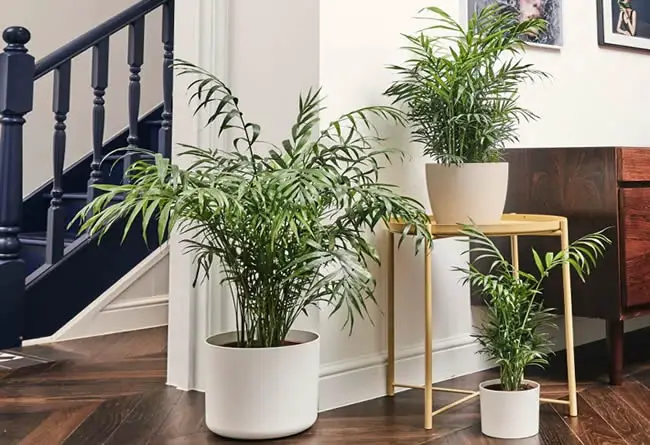
Thriving in indirect light, it’s an excellent choice for spaces with limited sunlight.
This palm variety is forgiving of occasional drying out, making it suitable for those who may not adhere strictly to a watering schedule.
Its graceful fronds add a touch of elegance, while its compact size makes it an ideal companion for various indoor settings.
14. Ponytail Palm (Beaucarnea recurvata)
The Ponytail Palm, with its distinctive bulbous base and long, arching leaves, is a resilient succulent that thrives in bright, indirect light.
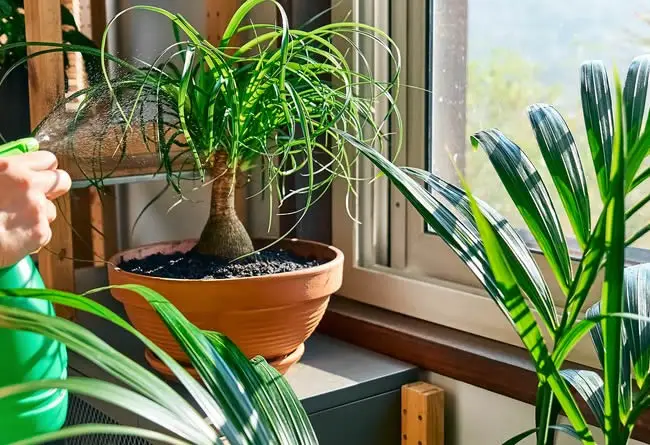
Its ability to store water in its swollen trunk allows it to withstand periods of drought, making it an excellent choice for forgetful waterers.
The Ponytail Palm’s unique appearance adds a touch of whimsy to indoor spaces, and its low-maintenance nature makes it a popular choice for those seeking a distinctive yet easy-to-care-for plant.
15. Dracaena (Dracaena marginata, Dracaena fragrans, etc.)
The Dracaena genus encompasses several species, all known for their hardiness and adaptability.
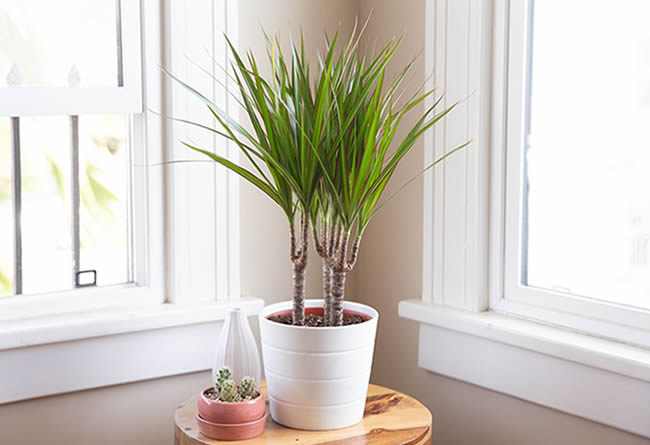
Dracaenas can thrive in various light conditions, from low to bright, indirect light.
With their upright growth habit, they are versatile for different settings.
These plants are forgiving when it comes to watering, allowing the soil to dry out between waterings.
Dracaenas are also known for their air-purifying qualities, enhancing the overall indoor air quality.
With a variety of leaf shapes and colors within the genus, Dracaenas offer both resilience and aesthetic diversity to indoor gardens.
You will find several dracaena guides on this website from our extensive dracaena marginata watering guide to our dracaena propagation guide and more.
16. Boston Fern (Nephrolepis exaltata)
The Boston Fern is a testament to hardiness and lush beauty.
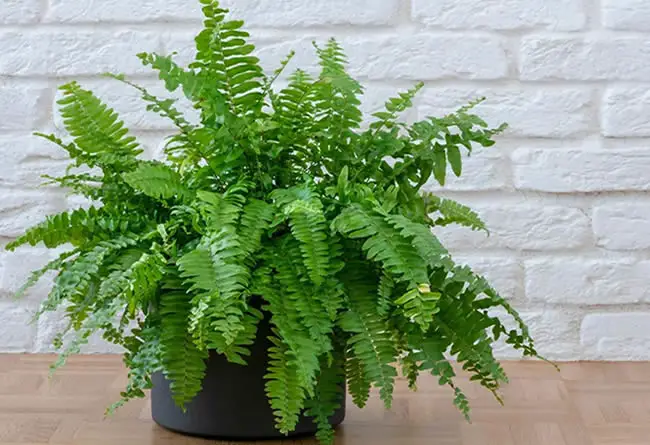
Flourishing in bright, indirect light and high humidity, it adapts well to indoor environments.
Its feathery fronds, gracefully arching in all directions, add a touch of elegance to any space.
Boston Ferns are forgiving when it comes to watering, appreciating consistently moist soil but bouncing back from occasional dryness.
With its air-purifying qualities, this fern not only contributes to a healthier atmosphere but also stands as a resilient choice for those seeking a classic and enduring houseplant.
17. Dieffenbachia (Dumb Cane)
The Dieffenbachia, commonly known as Dumb Cane, is prized for its attractive foliage and ability to withstand a range of light conditions.
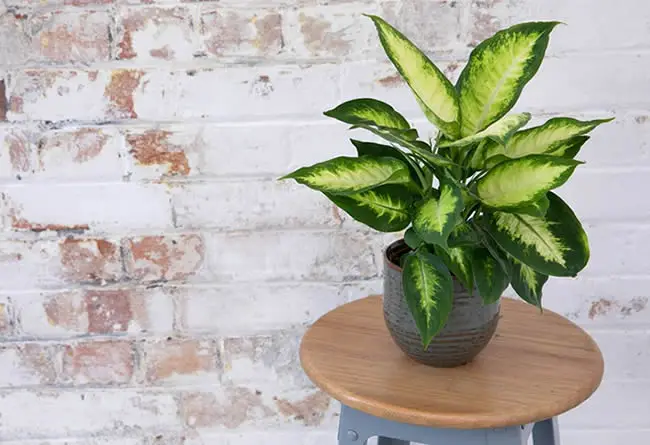
Thriving in medium to low light, it adapts well to indoor spaces with limited sunlight.
Dumb Cane is forgiving of irregular watering, allowing the soil to partially dry out before rehydration.
Its distinctive leaves with variegated patterns add visual interest, making it a popular choice for decorative purposes.
While it requires minimal attention, it’s essential to note that the sap can cause irritation, so handling with care is advised.
18. Croton (Codiaeum variegatum)
The vibrant and multicolored leaves of the Croton make it a standout addition to any indoor garden.
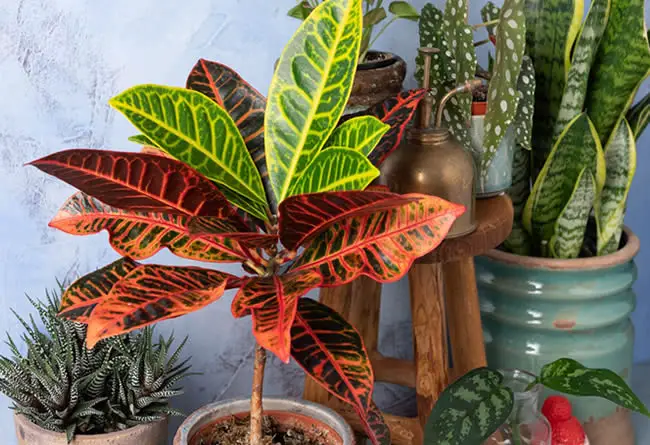
Adaptable to various light conditions, from bright indirect light to partial shade, it offers flexibility in placement.
Crotons appreciate consistently moist soil but can tolerate occasional drying out.
With their air-purifying qualities and visually striking foliage, these plants bring both style and resilience to indoor spaces. Though they may drop leaves in response to changes in environment or care,
Crotons typically bounce back, showcasing their robust nature and adding a burst of color to your living space.

